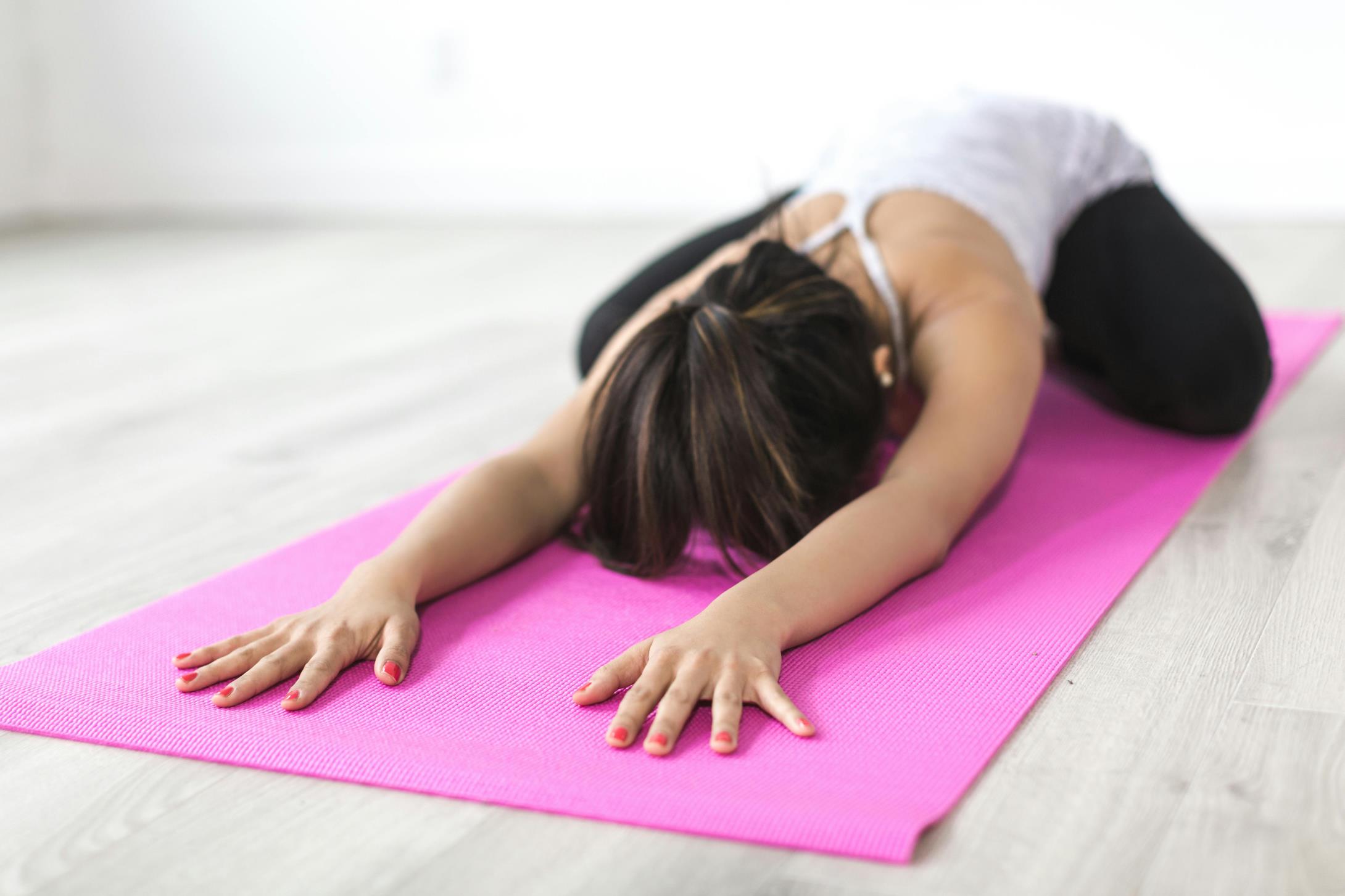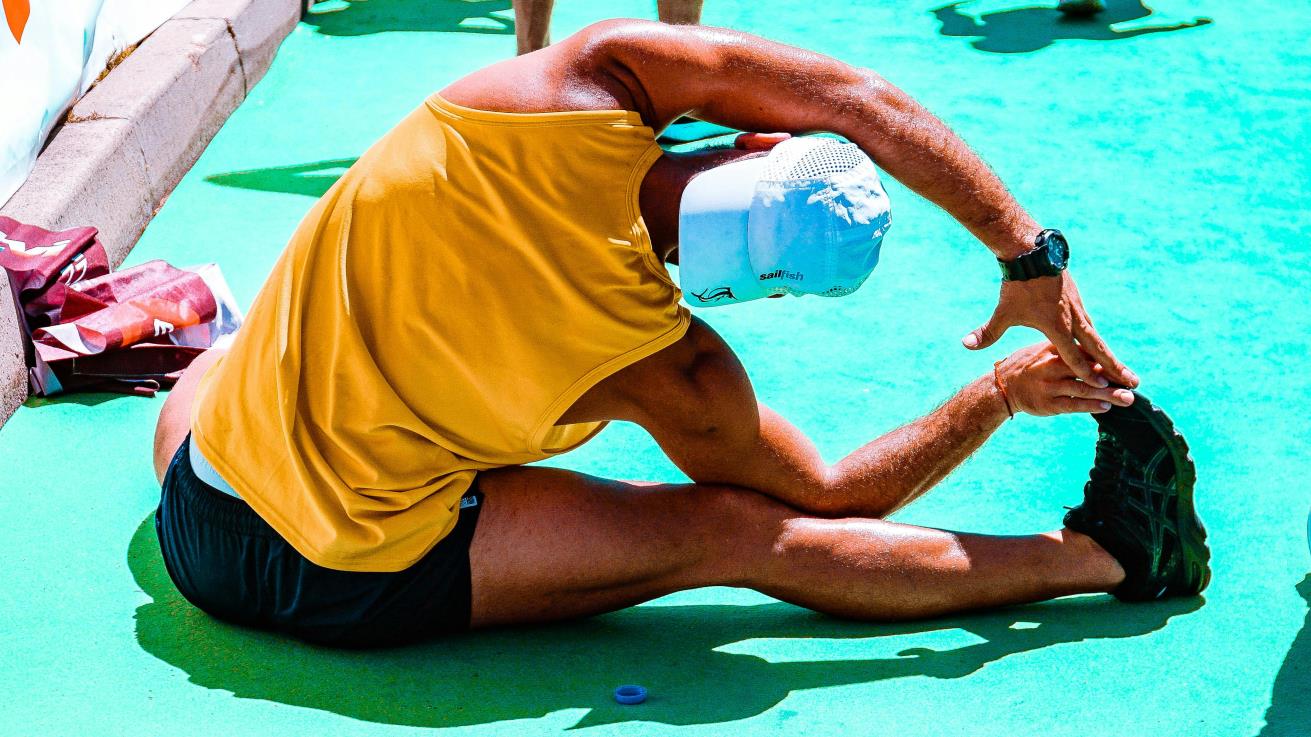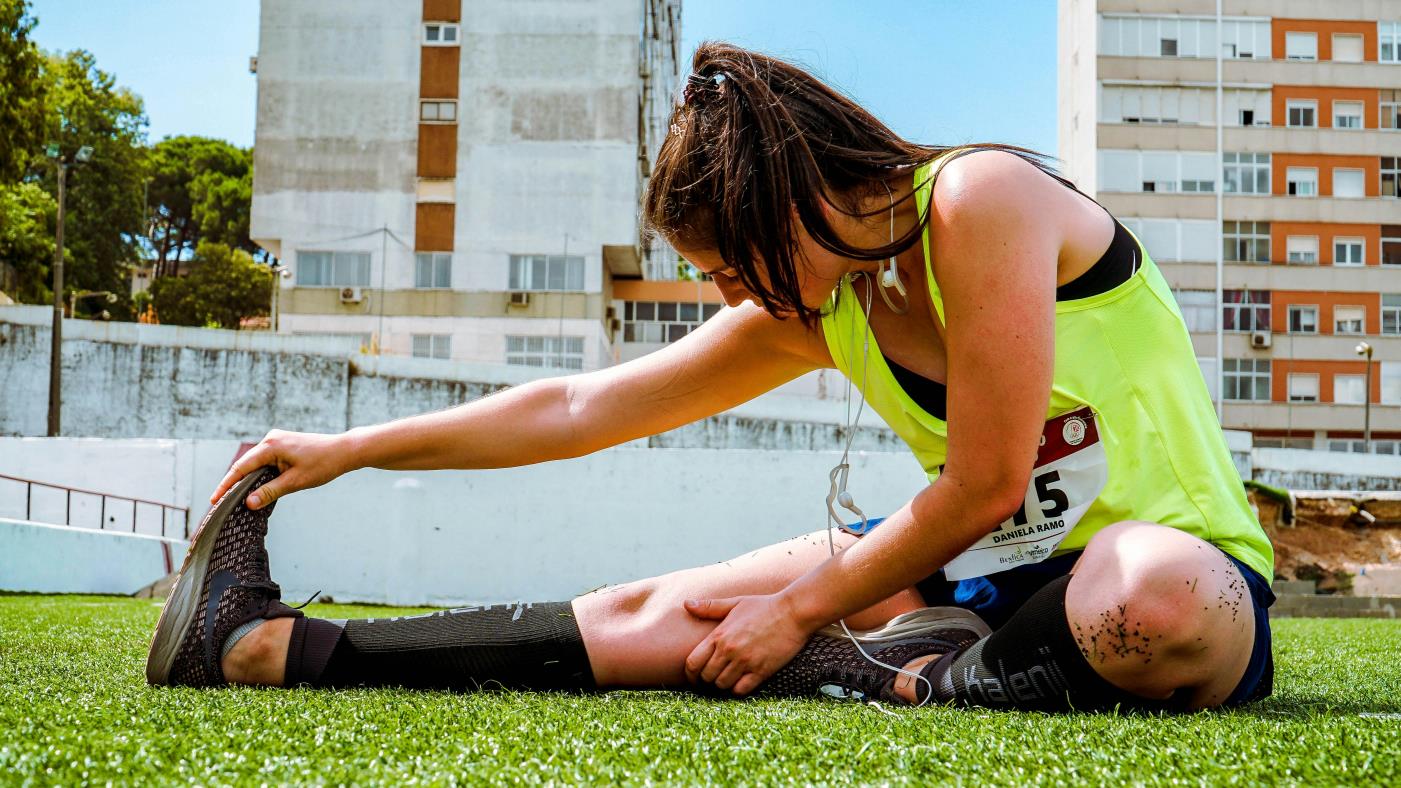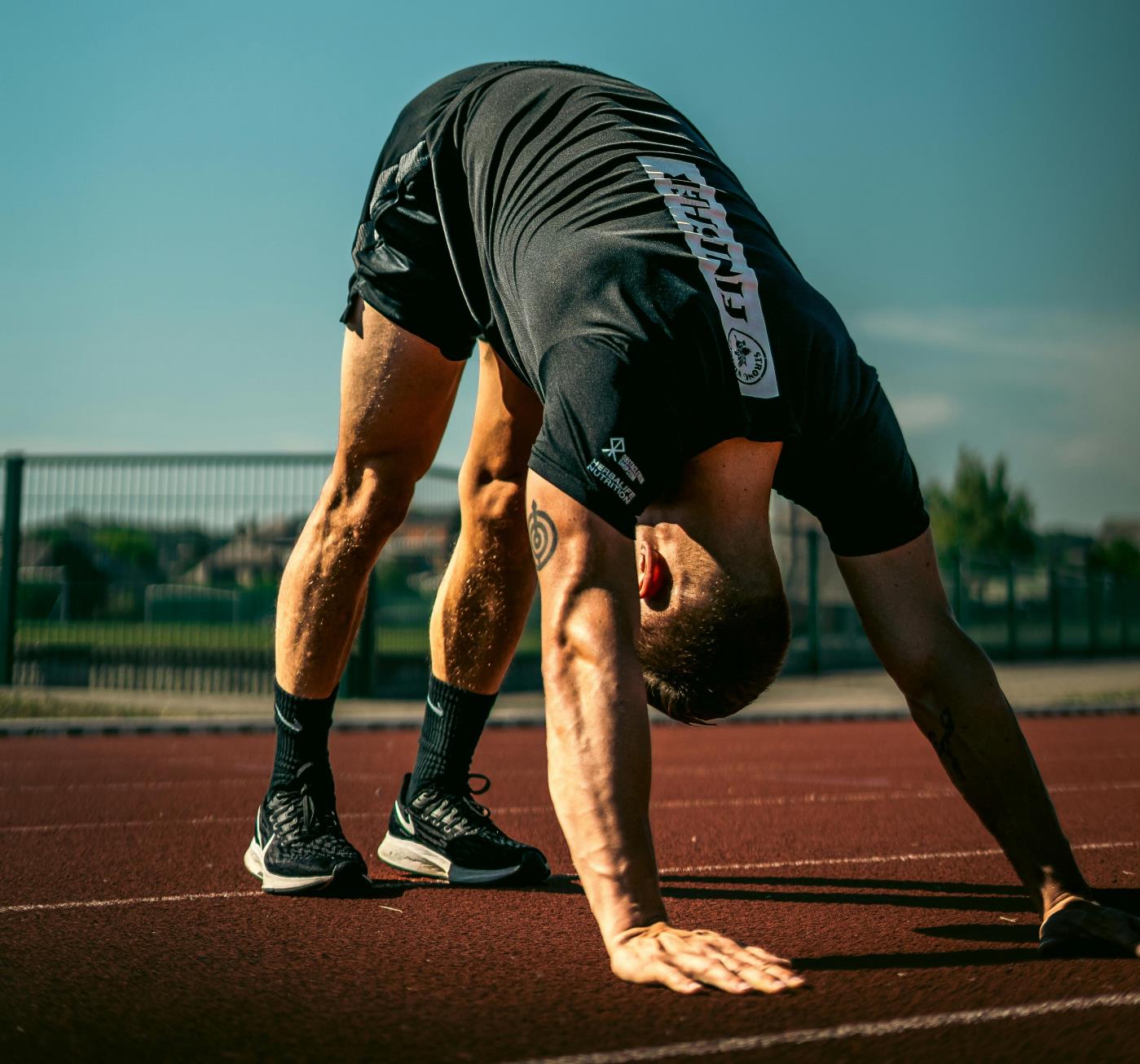Mobility Exercises for Triathletes to Improve your Swimming, Cycling and Running
 Karen Parnell
January 21, 2024
Karen Parnell
January 21, 2024
Mobility Exercises for Triathletes to Improve your Swimming, Cycling and Running
As a triathlete you have dedicated countless hours to perfecting your swimming technique, fine-tuning your cycling cadence, and mastering the art of efficient running. You have meticulously planned your training sessions, but there's a hidden gem often overlooked in the pursuit of triathlon greatness—mobility workouts. In this Blog I will shed light on why mobility should be a non-negotiable part of your training routine.
Understanding Mobility Workouts
Mobility workouts are the unsung heroes of athletic training. Unlike static stretching, which primarily focuses on muscle lengthening, mobility exercises aim to enhance joint range of motion, providing a myriad of benefits for triathletes. These exercises contribute not only to injury prevention but also play a vital role in improving posture, balance, and overall athletic performance. In a study by Ozkan Isik et al published in the European Journal of Human Movement concluded that “that dynamic warm-up including hip mobility exercises have a significant effect on sprint (running) performance”.

Get your FREE 30-Day Mobility Challenge
The Importance of Mobility work for Triathletes:
- Injury Prevention: Triathletes subject their bodies to repetitive, high-impact movements, increasing the risk of overuse injuries. Mobility workouts address muscle imbalances, reduce stiffness, and enhance joint stability, ultimately lowering the likelihood of injuries during both training and competition.
- Enhanced Performance: Imagine a swim stroke that moves through the water effortlessly, a pedal stroke on the bike that feels powerful and efficient, and a run that flows with natural grace. Incorporating mobility exercises into your routine can lead to improved range of motion, increased power output, better biomechanics, and ultimately, enhanced performance across all three disciplines.
- Recovery Acceleration: Triathlon training is demanding, both physically and mentally. Mobility workouts aid in faster recovery by promoting blood flow, reducing muscle soreness, and preventing the buildup of lactic acid. This accelerates recovery, allowing you to maintain a consistent and effective training schedule.
In a paper by the University, Xiamen, China focussing in on the effects of mobility stretching on cyclists in 2022 they found that “This training method helps muscles recover from fatigue and reduces the possibility of injury during exercise. The training method can make players concentrate and relieve mental fatigue such as stress and anxiety caused by training and competition”.
In another study by the Aquatics Lab. Department of Physical Education and Sports. Faculty of Sport Sciences, University of Granada in Spain concluded that a dynamic mobility stretching pool side warm up alongside an in water warm up before swimming competition improved swimming performance.

Photo by RUN 4 FFWPU
Download you FREE 30-day mobility challenge
Triathlete Mobility Exercises – three for Swimming, Cycling and Running
Hopefully I have convinced you to start adding mobility exercises into your training regime and to help I have put together three easy but effective movements you can try that will take less than 10 minutes to complete.
You can even add them into your warmup or warm down routine to save even more time. The general rule of thumb is dynamic or moving mobility stretches before your session and static mobility stretches after. For example, complete the three swimmers’ mobility exercises after every swim.
Swimmers Mobility Exercises
1. Prayer Stretch for Swimmers
Description: The Prayer Stretch, akin to the Child's Pose in yoga, is a rejuvenating stretch designed to target the lower back and hips – areas crucial for swimmers seeking optimal flexibility.
How to Do It:
- Starting Position: Begin on your hands and knees in a tabletop position.
- Movement: Sit back on your heels, extending your arms forward and lowering your chest towards the floor.
- Hold: Maintain the stretch for 20 seconds, concentrating on deep breaths and surrendering into the position.
- Repeat: Perform 4 sets of 20 seconds each.
Why to Do It:
- Lower Back Relief: Alleviates tension and provides relief to the lower back, crucial for swimmers engaging their core.
- Hip Flexibility: Enhances flexibility in the hips and thighs, aiding fluid leg movement in the water.
- Relaxation: Induces a calming and restorative effect, making it an excellent stretch for post-swim cooldown.
2. Sleeper Stretch for Swimmers
Description: The Sleeper Stretch focuses on the shoulder's posterior capsule, providing swimmers with improved internal rotation and enhanced shoulder mobility.
How to Do It:
- Starting Position: Lie on your side with the arm to be stretched extended straight out in line with your body.
- Movement: Bend the elbow to 90 degrees and place it on the ground.
- Stretch: Gently press the back of your hand towards the ground, feeling a stretch in the back of the shoulder.
- Hold: Maintain the stretch for 20 seconds, ensuring a comfortable and controlled position.
- Repeat: Perform 4 sets of 20 seconds each, alternating sides.
How to do the Sleeper Stretch
Why to Do It:
- Shoulder Mobility: Enhances internal rotation crucial for effective swim strokes.
- Prevents Tightness: Addresses tightness in the posterior capsule, reducing the risk of shoulder discomfort.
- Injury Prevention: Especially beneficial for swimmers involved in overhead arm movements, preventing potential injuries.
3. Pec Minor Stretch for Swimmers
Description: The Pec Minor Stretch targets the chest and front shoulder muscles, aiding swimmers in counteracting the effects of prolonged forward-reaching movements in the water.
How to Do It:
- Starting Position: Stand in a doorway with your right arm bent at a 90-degree angle, forearm on the door frame.
- Movement: Gently lean forward, creating a stretch across the front of the chest and shoulder.
- Hold: Maintain the stretch for 20 seconds, feeling a comfortable yet effective pull.
- Repeat: Perform 4 sets of 20 seconds on each side.
How to do the Pec Minor Stretch
Why to Do It:
- Corrects Posture Imbalances: Addresses tightness in the chest and shoulders prevalent in swimmers.
- Improved Posture: Regular practice contributes to an open and upright posture, vital for streamlined swimming.
- Enhanced Shoulder Mobility: Supports overall shoulder mobility and function during various swim strokes.
Incorporating these swimmer-specific stretches into your routine, with 4 sets of 20 seconds each, can contribute to improved flexibility, reduced muscle tension, and enhanced joint mobility, ultimately supporting a smoother and more efficient swimming stroke.
Download you FREE 30-day mobility challenge
Mobility Exercises for Cyclists
1. Wall Angels for Cyclists
Description: Wall Angels are a versatile exercise that targets the shoulders and upper back, promoting better posture and shoulder mobility. How many times have you finished a ride with tight shoulders and neck? This movement can help.
How to Do It:
- Starting Position: Stand with your back against a wall, feet about a foot away.
- Movement: Raise your arms to shoulder height, then slide them up the wall overhead while keeping your back and arms in contact with the wall.
- Angel Motion: Bring your arms back down to shoulder height, maintaining contact with the wall.
- Repeat: Perform controlled Wall Angel motions for 4 sets of 15 repetitions.
How to do the Wall Angel
Why to Do It:
- Posture Improvement: Strengthens upper back muscles, combating the forward-leaning posture often associated with cycling.
- Shoulder Mobility: Enhances shoulder flexibility crucial for maintaining an aerodynamic cycling position.
- Injury Prevention: Reduces the risk of overuse injuries and discomfort in the shoulders and upper back.
2. Lower Trunk Rotation for Cyclists
Description: Lower Trunk Rotation is a dynamic stretch that targets the lower back and hips, essential for cyclists who often maintain a forward-flexed position. This is one of my favourite moves and I even to this in the morning before a get out of bed.
How to Do It:
- Starting Position: Lie on your back with your knees bent and feet flat on the floor.
- Movement: Keeping your shoulders on the ground, rotate your knees to one side.
- Hold: Feel the stretch in your lower back and hips and hold for 20 seconds.
- Return: Bring your knees back to the centre and repeat on the other side.
- Repeat: Perform 3-4 sets of 20 seconds on each side.
How to do the Lower Trunk Rotation
Why to Do It:
- Spinal Mobility: Improves rotational mobility in the lower spine.
- Hip Flexibility: Targets the hips, addressing tightness associated with prolonged cycling.
- Relief from Lower Back Stiffness: Alleviates tension in the lower back, which can be aggravated during long rides.
3. 90-90 Seated Hip Rotations for Cyclists
Description: 90-90 Seated Hip Rotations focus on improving hip mobility, specifically targeting the external rotation of the hips. This is another great one to do at any time of the day to release your hips.
How to Do It:
- Starting Position: Sit on the floor with both knees bent at 90-degree angles, creating an "L" shape.
- Movement: Rotate your upper body to one side, aiming to bring your chest towards the ground.
- Hold: Feel the stretch in the hips and hold for 20 seconds.
- Return: Rotate to the other side and repeat the stretch.
- Repeat: Perform 4 sets of 20 seconds, alternating sides.
Why to Do It:
- Hip Mobility: Enhances rotational mobility in the hip joints.
- Balance Improvement: Promotes better balance and stability, crucial for maintaining control during cycling.
- Prevention of Hip Tightness: Addresses tightness in the hips, a common issue among cyclists.
Incorporating these cyclist-specific mobility exercises into your routine can contribute to improved posture, reduced muscle tension, and enhanced joint mobility, promoting a more comfortable and efficient cycling experience.
Download you FREE 30-day mobility challenge
Runners Mobility Exercises
1. Hip Cars (Controlled Articular Rotations) for Runners
Description: Hip Cars serve as a dynamic mobility exercise tailored to enhance hip joint mobility for runners through controlled circular movements. This will challenge your balance and core so a good all-rounder.
How to Do Them:
- Starting Position: Stand with feet hip-width apart, hands on your hips.
- Movement: Lift one knee toward your chest, then externally rotate the hip by moving the knee outward. Continue moving the knee to the side, then internally rotate the hip, bringing the knee back to the starting position.
- Repeat: Perform 5-10 rotations in one direction and then switch to the other leg.
You can use a chair or wall to help with this movement if needed.
How to do Hip Cars
Why to Do Them:
- Joint Health: Promotes optimal hip joint health by exploring the full range of motion.
- Flexibility: Improves flexibility in the hip muscles, crucial for the repetitive motion of running and maintaining proper form.
2. Cat/Cow for Runners
Description: Cat/Cow, a yoga-inspired dynamic stretch, helps runners enhance spinal mobility through rhythmic arching and rounding of the back.
How to Do Them:
- Starting Position: Begin on your hands and knees in a tabletop position, with wrists under shoulders and knees under hips.
- Cow Pose (Arch): Inhale as you arch your back, dropping your belly towards the floor and lifting your head and tailbone upwards.
- Cat Pose (Round): Exhale as you round your back, tucking your chin to your chest and drawing your belly button towards your spine.
- Repeat: Slowly flow between Cat and Cow for 10-15 repetitions.
How to do Cat Cow
Why to Do Them:
- Spinal Flexibility: Enhances flexibility and mobility in the spine, crucial for maintaining an upright posture during running.
- Core Activation: Activates and strengthens the core muscles, providing stability during the running stride.
- Relief: Offers relief from back stiffness and contributes to improved overall posture.
3. World's Greatest Stretch for Runners
Description: The World's Greatest Stretch is a multi-functional stretch designed to target multiple muscle groups simultaneously, making it ideal for runners. It’s not called the world’s greatest stretch for no reason and can be completed before your run.
How to Do Them:
- Starting Position: Begin in a lunge position, right foot forward and left foot extended back.
- Hamstring Stretch: Straighten your right leg, keeping the left knee on the ground, and lean forward to stretch the hamstring.
- Twist: Place your right hand on the ground and twist your torso to the right, reaching your left hand towards the ceiling.
- Hip Flexor Stretch: Return to the lunge position, feeling a stretch in the left hip flexor.
- Repeat: Perform 5-8 repetitions on one side, then switch to the other leg.
Why to Do Them:
- Comprehensive Stretch: Targets hamstrings, hip flexors, and thoracic spine simultaneously, addressing common areas of tightness in runners.
- Functional Movement: Mimics aspects of running and dynamic athletic movements.
- Improved Range of Motion: Enhances flexibility and range of motion in the lower body, vital for a smooth-running stride.
Incorporating these runner-specific mobility movements into your regular routine can contribute to improved joint health, increased flexibility, and enhanced overall mobility. Always perform these exercises with control and within your comfortable range of motion. If you have any existing injuries or concerns, consult with a fitness professional or healthcare provider before attempting these movements.
Download you FREE 30-day mobility challenge
Conclusion: Why Mobility is Key for Athletes
Triathletes, consider mobility workouts as the secret weapon that can propel you to new heights in your triathlon journey. By incorporating these exercises into your weekly routine, you not only reduce the risk of injuries but also unlock new levels of efficiency and power in each discipline. Stay flexible, stay strong, and let your mobility become the cornerstone of your triumphs in the world of triathlon.
Karen Parnell is a Level 3 British Triathlon and IRONMAN Certified Coach, 8020 Endurance Certified Coach, WOWSA Level 3 open water swimming coach and NASM Personal Trainer and Sports Technology Writer.
Karen has recently completed a postgraduate MSc in Sports Performance Coaching at the University of Stirling.
Need a training plan? I have plans on TrainingPeaks and FinalSurge:
I also coach a very small number of athletes one to one for all triathlon and multi-sport distances, open water swimming events and running races, email me for details and availability. Karen.parnell@chilitri.com
Get your FREE Guide to Running Speed and Technique
Get your FREE Swim Workouts for Triathletes E-book
Get your FREE Open Water Swimming Sessions E-Book
Get you FREE 31 Structured Indoor Cycling Sessions and Training Plan
Download you FREE 30-day mobility challenge

Photo by RUN 4 FFWPU
References
(PDF) THE EFFECTS OF STRETCHING ON TRAINING CYCLISTS (researchgate.net)
Dialnet-The Acute Effects Of A Dynamic Warmup Including Hip Mobility-7950311.pdf
Cleveland Clinic: Every Life Deserves World Class Care
Squat University – The Ultimate Guide To Finding Your True Strength
Exercise prescription software for therapist | Rehab My Patient
Triathlete Mobility FAQ
Q1: What is the difference between stretching and mobility exercises?
Stretching primarily focuses on lengthening muscles, while mobility exercises aim to improve the range of motion and functional capacity of joints. Mobility exercises enhance flexibility and joint stability, contributing to better overall movement.
Q2: Why are mobility exercises important for triathletes?
Triathletes engage in repetitive and demanding movements across swimming, cycling, and running. Mobility exercises help prevent injuries, improve performance by enhancing range of motion, and contribute to faster recovery by reducing muscle soreness.
Q3: How often should I include mobility exercises in my training routine?
It's recommended to perform mobility exercises at least 2-3 times a week, ideally as part of your warm-up routine before specific triathlon training sessions. Consistency is key to experiencing the full benefits of improved flexibility and joint mobility.
Q4: Can I do these mobility exercises on race day?
While a brief and controlled mobility routine on race day can be beneficial, avoid introducing new exercises. Stick to familiar movements to prevent any unexpected reactions or discomfort.
Q5: How long should each mobility exercise session last?
Aim for a 10–15-minute mobility session. Focus on quality rather than quantity. Performing each exercise with proper form and control is more important than rushing through a routine.
Q6: Can I customize these exercises based on my specific needs?
Absolutely! Tailor your mobility routine based on individual weaknesses, imbalances, or areas of stiffness. Consult with a fitness professional if you have specific concerns or injuries.
Q7: Are these exercises suitable for beginners?
Yes, these exercises are generally beginner-friendly. Start with a manageable number of repetitions and gradually progress as your flexibility improves. If you have any health concerns, consult with a fitness professional or healthcare provider.
Q8: Should I replace my regular warm-up with these mobility exercises?
These mobility exercises are best incorporated into your warm-up routine, not as a complete replacement. Include a combination of dynamic movements, light aerobic activity, and sport-specific drills for a comprehensive warm-up.
Q9: Can I perform these mobility exercises at home?
Absolutely! Most of these exercises require minimal equipment and can be done at home. Ensure you have proper form and sufficient space to perform each movement safely.
Q10: How long does it take to see improvements in mobility?
Individual progress varies, but consistent practice over a few weeks should yield noticeable improvements in flexibility and joint mobility. Listen to your body and adjust intensity as needed.
Download you FREE 30-day mobility challenge

Photo by Thomas Ronveaux
